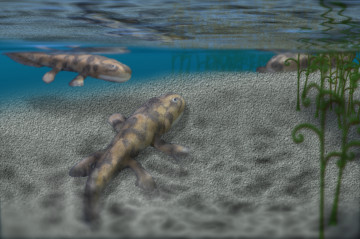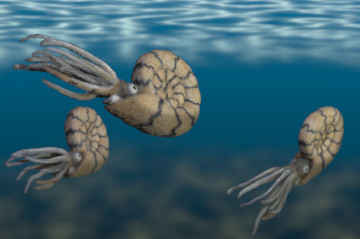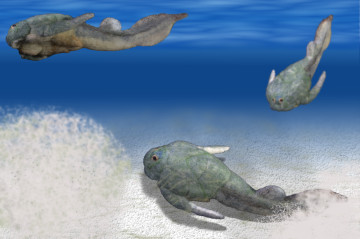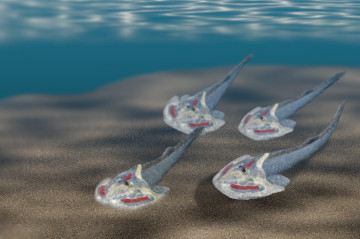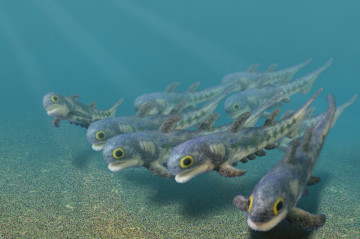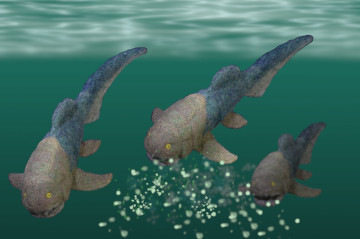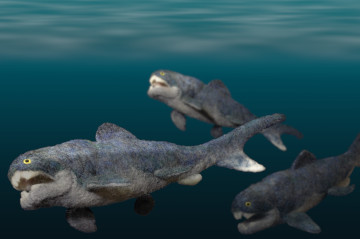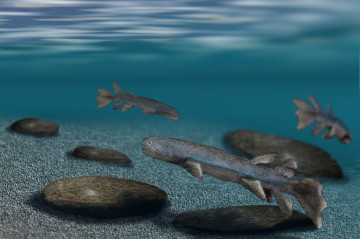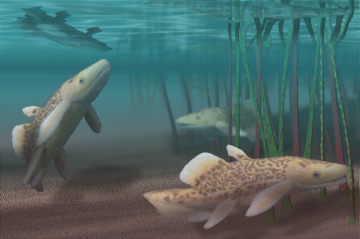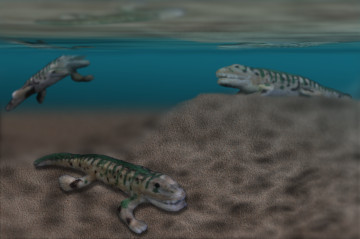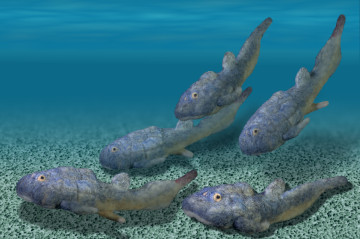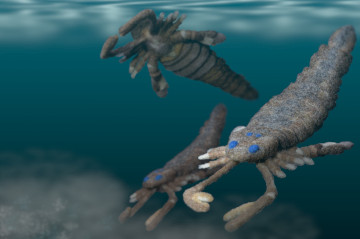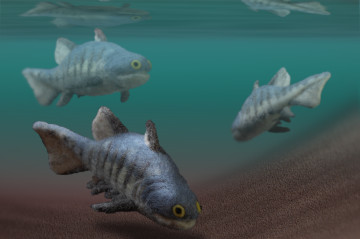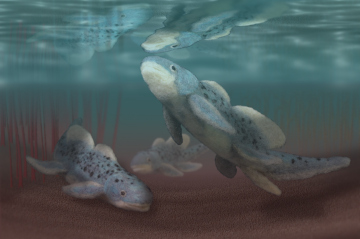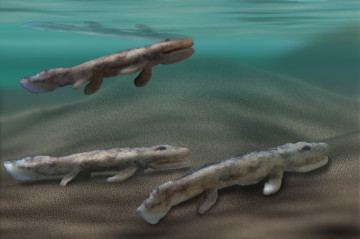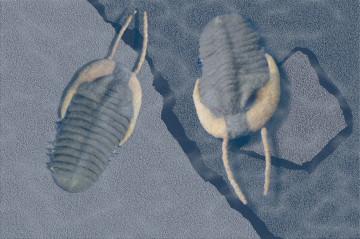- Cambrian
- Ordovician
- Silurian
- Devonian
- Carboniferous
- Permian
Devonian Period
From 419.2 million year - 358.9 milion year ago.
The Devonian is named for Devonshire, England.
Gondwana moved from the South Pole and turned its course toward north. Discreted landmasses assembled again, creating the supercontinent Euramerica, which would form North America, Greenlan, and so on. In other words, the world would be occupied by the two supercontinents, Gondwana and Euramerica, and the vast ocean would spread out the rest region. Afterward, these continents eventually would collide and formed one supercontinent, Pangaea during the end of the Permian.
Orogeny also progressed, so many moutainranges were created. A huge mount of sediments yielded by erosion of these mountains created vast shallow water and reefs. Throughout the Devonian, the world was warm, but the inland turned into arid climate. By the end of the Devonian, global cooling progressed.
Fish showed diversification and radiation so much that the Devonian is said to be "the Age of Fishes". While agnathans (e.g. Cephalaspis), jawless fishes were dwelled in the seafloor, Placoderms (e.g. Coccosteus, Dunkleosteus) emerged in the Upper Silurian gradually became to stand the summit of predators with powerful jaws and blade-like bony plate as teeth.
Furthermore, cartilaginous fish (Chondrichithyes) and bony fish (Osteichthyes) also developed. The former eventually evoled to sharks and rays. The later evolved to ray-finned fish (Actinopterygii), which is modern major fish group, and lobe-finned fish (Sarcopterygii), which has thick and fleshy paired fins. Afterward, some group of the lobe-finned fish evolved to the terrestrial vertebrates, namely tetrapods. As a first step, amphibian appeared (e.g. Acanthostega).
During the Lower Devonian, ammonoidea also emerged. The trilobites gradually declined.
The land plants had not vascular tissue yet and needed water for their reproduction so that they initially lived on the wetland, eventually, they developed the vascular system and adapted to the dried area.
By the end of the Devonian, Vascular plant (land plant, tracheophytes), for example, ferns (Polypodiopsida), club moss (Lycophyte), horsetails (Equisetum), were appeared. Furthermore, progymnosperm, such as Archaeopteris, which had woody trunk and reproducted by spore like ferns, emerged and grew rather tall. The first forests had produced, and seed plant appeared. The diversification of the arthropods was facilitated in line with the diversification of the land plant, but insects could not fly the sky yet.
The more the forests progressed, the more carbon dioxide were absorbed from the earth's atomosphere. The re-glaciation in Godowana made the sea level falling down greatly. Adding other causes, the earth gradually became cooler and underwent the mass-extinction. Especially, marine creatures had vast damage, many species of trilobites also disappeared by the end of the Devonian.
References:
- National Geographics
- Pappas S (2013) Paleozoic Era: Facts & Information Live Sience June 20, 2013
- Smithsonian Environmental Research Center Forces of Change - Atmosphere -
- UCMP - University of California Museum of Paleontolgy - (Legacy Exhibits Online, Tour of Geologic TIme)
- International Commission on Stratigraphy - International Chronostratigraphic Chart v 2023/06.

